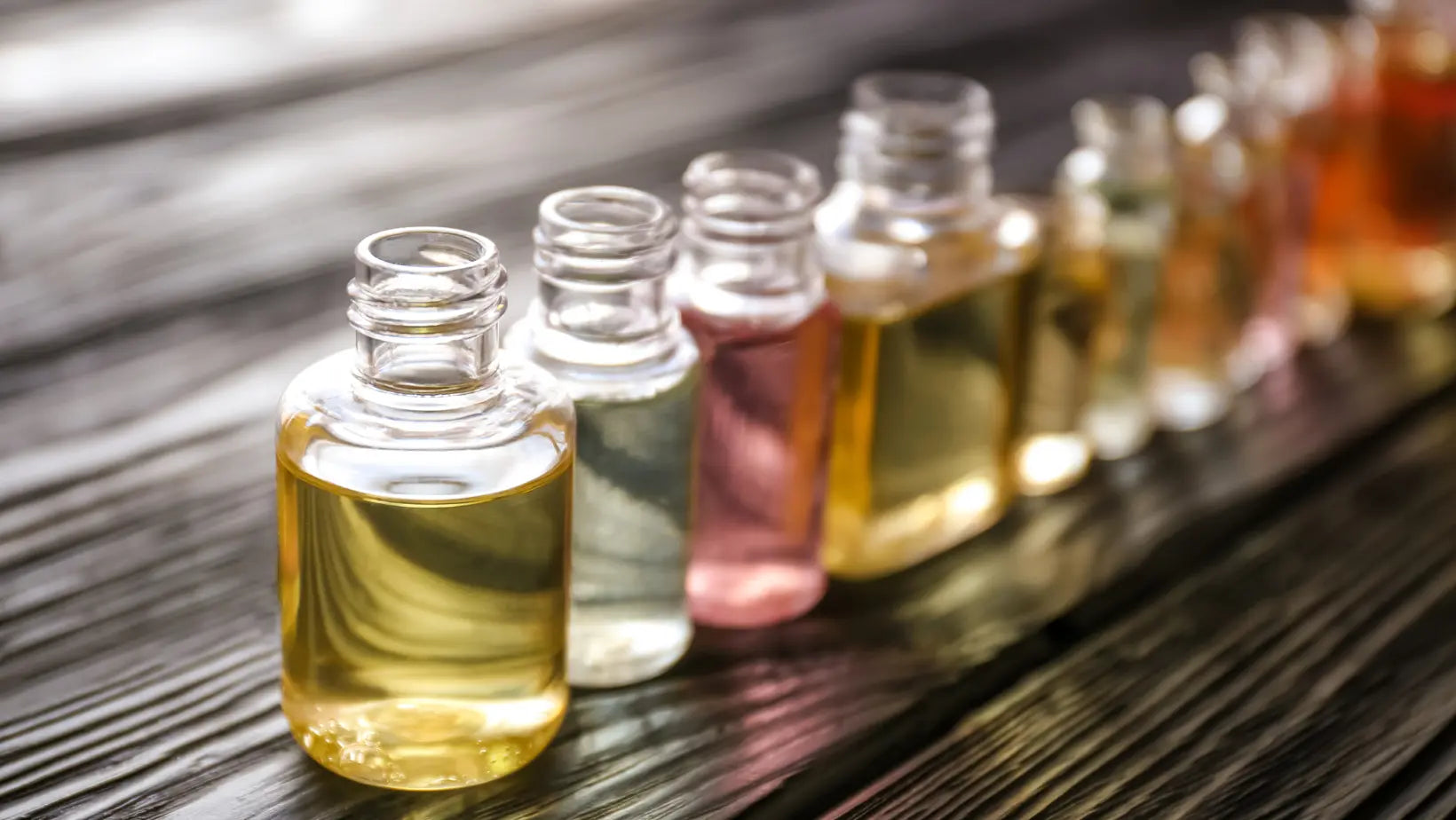
The best natural oils for preventing and treating stretch marks
Stretch marks are a common skin problem faced by many people, especially during times of rapid physical changes such as pregnancy, weight gain, or hormonal fluctuations. These fine lines that appear on the skin can range from intense red to pearly white, often becoming a source of aesthetic discomfort. Although stretch marks do not represent a serious health issue, many people seek solutions to prevent or reduce them.
One of the most effective ways to prevent the appearance of stretch marks is proper skin care, especially through hydration. Natural oils, rich in nutrients and essential fatty acids, offer an accessible and effective alternative for maintaining skin elasticity and preventing the breaking of collagen fibers. In this article, we will explore the best natural oils for preventing and treating stretch marks, explaining how each of them contributes to the health and appearance of the skin.
What are stretch marks and why do they appear?
Stretch marks are visible lines or streaks on the surface of the skin that appear when the skin is stretched rapidly over a short period of time. Initially, these lines can be red, purple, or pink, and as the skin tries to heal, they become lighter in color, having a white or silvery hue. They often appear in areas such as the abdomen, thighs, hips, breasts, and arms.
The main causes of stretch marks are:
- Pregnancy: Stretch marks are common during pregnancy, especially in the second and third trimesters, due to the rapid stretching of the skin and hormonal changes that affect skin elasticity.
- Rapid weight gain or sudden weight loss: When the body changes quickly, either by gaining or losing weight, the skin does not have enough time to adapt to the new size, which leads to its excessive stretching.
- Hormonal changes: Adolescents, pregnant women, and individuals undergoing hormonal treatments may notice stretch marks due to hormonal fluctuations that affect collagen production and skin elasticity.
- Genetic factors: The tendency to develop stretch marks can also be influenced by hereditary factors. If a close family member has stretch marks, you may have a higher predisposition to develop them.
The importance of prevention and skin care
Hydration and skin care are essential in preventing the appearance of stretch marks or in reducing their intensity. Well-hydrated skin is more elastic and better able to cope with rapid stretching. Regular application of moisturizing and nourishing products can help maintain healthy and supple skin, minimizing the risk of breaking collagen and elastin fibers, which lead to the appearance of stretch marks.
Natural oils are popular solutions for preventing and treating stretch marks, as they contain beneficial ingredients that hydrate, regenerate, and strengthen the skin's natural barrier. Here are some of the most effective oils for preventing and treating stretch marks:
Good oils for preventing and treating stretch marks:
1. Rosehip oil

Rosehip oil is extremely rich in essential fatty acids (such as omega-3, omega-6, and omega-9), which are essential for restoring and maintaining the skin's lipid barrier. These acids help to deeply hydrate and nourish the skin, preventing dryness and loss of elasticity. Additionally, the vitamin C in rosehip oil is a powerful antioxidant that stimulates collagen production, essential for skin elasticity and preventing stretch marks. Vitamin A (retinol) contributes to cellular regeneration, improving skin texture and preventing collagen degradation.
Why it is good to be in the composition of cosmetics:
Thanks to this combination of nutrients, rosehip oil is an ideal ingredient for cosmetics aimed at preventing stretch marks. It helps repair and protect the skin, visibly improving its texture and suppleness. Present in creams or lotions, rosehip oil contributes to maintaining hydrated, elastic skin that is resistant to rapid stretching, making it ideal for daily use.
Usage:
To benefit from its properties, rosehip oil can be applied directly to skin prone to stretch marks, such as the abdomen, thighs, and breasts, twice a day. Gentle massaging helps with rapid and deep absorption into the skin, maximizing its moisturizing and regenerating effect.
2. Lavender oil

Lavender oil is known for its calming and anti-inflammatory properties. The main active compounds in lavender oil, such as linalool and linalyl acetate, have relaxing effects on the skin, reducing inflammation and irritation. These properties make it suitable for treating sensitized or damaged skin areas, including those affected by stretch marks. Lavender oil also has a strong regenerative effect, stimulating cell regeneration and accelerating the healing of affected tissues.
How it helps prevent stretch marks:
Lavender oil not only reduces inflammation but also helps improve skin elasticity, thereby preventing the appearance of stretch marks. In the case of existing scars and stretch marks, regular use of lavender oil can help fade them by regenerating the cell layer. Its soothing effect also helps reduce discomfort or itching associated with stretched or affected skin.
Why it is good to be in the composition of cosmetics:
The presence of lavender oil in the composition of cosmetic products brings multiple benefits. Firstly, it soothes and reduces inflammation, which is essential for people with sensitive or irritation-prone skin. Secondly, it has the ability to stimulate skin regeneration, making it a valuable ingredient for anti-stretch mark or anti-scar lotions and creams. Additionally, lavender oil has a pleasant and relaxing scent, also providing an aromatherapeutic effect.
Usage:
Lavender oil can be applied diluted in other carrier oils (such as coconut oil or rosehip oil) to prevent stretch marks or reduce the appearance of existing ones. It is recommended to apply daily to areas prone to stretching, such as the abdomen, thighs, and hips, gently massaging for optimal absorption. When included in cosmetic products, it can be used daily as part of a skincare routine, taking care to avoid using it in too high concentrations to prevent skin sensitization.
3. Coconut oil

Coconut oil is a very popular ingredient in skin care due to its rich content of fatty acids. The most important of these is lauric acid, which has unique properties. This fatty acid helps with deep skin penetration, providing intense and long-lasting hydration. Deep hydration is essential for maintaining skin elasticity, as dry skin is more prone to collagen fiber breakage, leading to the appearance of stretch marks. Additionally, coconut oil contains vitamin E, a powerful antioxidant that helps protect the skin against free radicals and stimulates cell regeneration.
How it helps prevent stretch marks:
Coconut oil is extremely effective in preventing stretch marks due to its ability to hydrate and nourish the skin. By keeping the skin hydrated and elastic, the oil reduces the risk of stretch marks, especially during periods of rapid skin stretching, such as pregnancy or sudden weight gain. The anti-inflammatory and antibacterial properties of coconut oil also help soothe irritated or inflamed skin, making it useful for treating existing stretch marks as well. These properties help reduce redness and discomfort, speeding up the healing process and improving the skin's appearance.
Why it is good to be in the composition of cosmetics:
Coconut oil is an excellent ingredient in cosmetics due to its versatility. It is a natural emollient, which makes it ideal for creams and lotions intended for stretch mark prevention. Being non-comedogenic, it does not clog pores and is suitable for all skin types, including sensitive skin. Its antibacterial and antifungal properties provide additional protection against irritations and inflammations, so it can be used daily without causing sensitivity. Coconut oil is also an effective carrier for other essential oils, which means it can be combined with other active ingredients to enhance skin benefits.
Usage:
Coconut oil can be used daily by applying it directly to areas prone to stretch marks, such as the abdomen, thighs, and hips. For optimal results, it should be applied after showering, on damp skin, to help seal in moisture. It can also be combined with other essential oils, such as lavender or rosehip oil, for a synergistic effect. Being a versatile ingredient, it can also be found in numerous cosmetic products, from moisturizing lotions to creams specially designed for the prevention and treatment of stretch marks.
4. Geranium oil

Geranium oil (Pelargonium graveolens) is valued for its rich composition of active compounds that bring multiple benefits to skin health and appearance. Among the main active compounds are geraniol and citronellol, which give the oil regenerative, anti-inflammatory, and astringent properties. Geranium oil is recognized for its ability to stimulate cell regeneration, helping the skin regain its suppleness and firmness. Additionally, this oil has a skin tone evening effect, contributing to the fading of scars and stretch marks.
How it helps prevent and treat stretch marks:
Pelargonium oil is ideal for preventing and treating stretch marks due to its astringent and regenerative properties. Its astringent effect helps tone the skin, which improves its elasticity and resistance to stretching, thus preventing the appearance of stretch marks. In the case of existing stretch marks, pelargonium oil contributes to skin regeneration, improving the texture and appearance of scars. Regular use of this oil can accelerate the skin healing process and make stretch marks less visible, evening out the tone and texture of the affected skin.
Why it is good to be in the composition of cosmetics:
Geranium oil is a valuable ingredient in cosmetic products due to its versatility and effectiveness in maintaining healthy and toned skin. The astringent properties of this oil help tighten pores and strengthen the skin tissue, making it an important adjunct in creams and lotions designed to prevent and reduce stretch marks. Additionally, being an oil with cell regeneration properties, it is ideal for products aimed at fading scars or repairing skin after damage. Geranium oil also contributes to skin hydration, preventing dryness and maintaining elasticity, an essential aspect to avoid the appearance of stretch marks.
Usage:
Geranium oil can be used diluted in other carrier oils, such as sweet almond or coconut oil, and applied to areas prone to stretch marks, such as the abdomen, thighs, and breasts. It is recommended to be gently massaged onto damp skin, preferably after a bath, to enhance absorption and maximize beneficial effects. Used daily, geranium oil can help not only prevent stretch marks but also improve the appearance of existing ones, giving the skin a firmer and more even look.
5. Ylang-ylang oil




Leave a comment
This site is protected by hCaptcha and the hCaptcha Privacy Policy and Terms of Service apply.